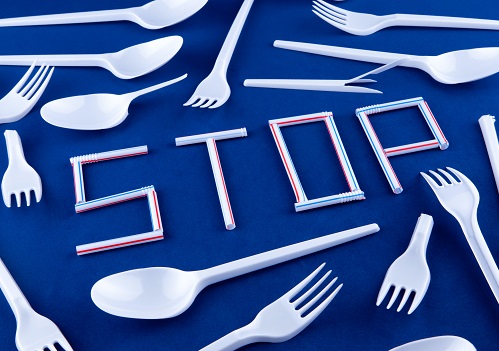The current economy we live in is linear: we take from the earth, we make products, and then we throw them away. This model is unsustainable for both people and planet. In contrast, the circular economy provides an alternative that is regenerative which benefits the environment and everyone living in it.
What is the circular economy?
The circular economy is built around a butterfly framework with one side focusing on the technical cycle of materials and the other side focusing on the biological cycles. The technical cycle aims through reuse, maintenance and remanufacture, to keep materials in the economy rather than letting them spill out into landfill, pollute the environment and waste resources. The biological cycle aims for biologically based materials to be returned to the biosphere.
The circular economy is built around three principles: Design out waste and pollution, Keep products and materials in use and Regenerate natural systems.
We are now living in a plastic age. Plastic is so widely used that it’s in everything we consume, from food and clothes to beauty products. Over 90 percent of plastic is single-use plastic – used only once and then thrown away. Our consumption habits have led to tremendous contamination of our planet and oceans. The Great Pacific Garbage Patch is now so big that it would take “67 ships one year to clean up less than one percent of the North Pacific Ocean”. If we don’t make any change now, it is estimate that we will have four more times the amount of plastic in our oceans in just 20 years. ,
Plastic currently flows in a linear model: take-make-dispose, leading to only 2 percent of plastic created being recycled and 98 percent ending up in landfills. In order to solve the plastic problem we need to move towards a circular economy. We can adopt the circular economy principles to solve the plastic problem in two ways:
- Plastic alternatives (design out waste)
- Change the way we use plastic (keep materials in use).
Plastic alternatives
Plastic alternatives are vital to cutting down on plastic pollution. Using biodegradable materials is the most clear way forward. Plastic-like materials can be created using orange peels, as demonstrated by Aimplas, or fish-scale waste as adapted by Marinatex. Not only do these solutions avoid plastic creation, they also find a practical use for food waste. At BothOfUs we are currently developing an online marketplace for plastic-free alternatives. And PlasticFreeEurope allows you to purchase anything – from clothes to cutlery and beauty products – with the ease of mind that you are not contributing to the plastic problem.
But plastic alternatives won’t be created or adopted overnight. As plastic continues to play a key role in our economy, we also need to learn how to change the way we use it.
Changing how we use plastic
The main problem is not the plastic itself but the amount we use, and how we use it. Some of the key principles of the circular economy is to keep products and materials in use and design-out waste. When it comes to plastic this means moving away from single-use plastic and extending the life cycle of the plastic that we already have.
There are some brilliant companies that are playing their part, removing plastic from our oceans and landfills. Popsicase, a Barcelona company, is using the plastic from old fishing nets to create mobile phone cases. If the case breaks or you want a new one, you can simply send it back to them for free and they will repair it, creating a fully circular business model. NuOceans has also found a good use for old fishing nets but, in this case, it’s to create flip flops. One of my all time favourite companies has even found a use for typically non-recyclable plastic (and battery waste). Gomi makes portable chargers, speakers, and beer taps using plastic that normally ends up in the landfill.
It is not hard to understand why plastic has become so widely used, it is light yet strong, and can be flexible or hard. It is a material so versatile it can be – and is – used for almost anything. However, the consequences of using it in such vast amounts is devastating. The way we create and use plastic needs to be fundamentally changed. There are three primary ways we can rethink plastic: design and production, reuse, and recycling.
Design
The redesign of plastic is essential to reducing negative environmental effects. Consider your favourite sweets or crisps. Does the packaging look the same inside and out? This type of packaging is created using layers of different types of plastics that have different functions: one layer to keep the food fresh, another layer to stop moisture from getting in, and a separate layer of material that can be printed on, for branding. Whilst all of these layers help to keep snacks fresh, the bonding together of different materials means they can’t be recycled. Small plastic objects also add to the problem. Plastic sachets and small lids make collection harder and prone to leakage into the natural environment.
Reuse
Single-use plastic is the most widely used plastic in the world. Think about how many people buy takeaway coffee, many purchasing one every day. But the cup and plastic lid are not reused. Moreover, the cup itself will likely have a plastic film inside to hold the liquid and keep it warm. For one person alone, this could mean 365 cups and plastic lids that are thrown away a year, all of which end up in the landfill, polluting the environment.
If you have a look at the food you buy daily, the majority will come in packaging that is thrown away once opened. This linear model of take, make and dispose means our environment is now littered with plastic. Plastic in a circular economy should be reusable and should encourage refills. Many companies are already doing this. Starbucks and many other cafes offer discounts to people who bring in their own mug in a bid to encourage refills. Other shops such as Gra de Gracia in Barcelona have a business model built around refills, with customers bringing their own packaging or jars to purchase the food. Companies like these are encouraging a shift in consumer behaviour whilst adding additional value to their bottom line.
Recycle
The final step needed to reduce the plastic problem is improving our methods of recycling – and it is very much the last step. Whilst recycling adds value to plastic and keeps the material in use for longer, it also uses a lot of energy. It should, therefore, be the final stage when use/reuse/redistribute, maintenance, and refurbishment are no longer possible. In the linear economy a massive 98 percent of plastic ends up in landfills or polluting our seas. We need to significantly up our rates of recycling. For that to happen, education and proper collection must be encouraged.
One of the biggest challenges is that most people don’t even know which plastic is – and is not – recyclable. Ecologica Recicla a brilliant initiative in Colombia, is teaching the local community not just the importance of recycling but HOW to do it. Although recycling is the last stage it doesn’t make it less important. If you are going to throw away a plastic water bottle in a normal bin stop to think about where that water bottle will end up. There is still so much value in the material and the water bottle, if recycled, can go towards creating new products whilst reducing the production of virgin plastics.
The circular economy offers a new way of thinking and a new way of behaving which can not only bring added value to a business, it can help sustain the planet.
Eller Everett is passionate about creating a positive impact. She is the cofounder of BothOfUs, a social impact startup that uses technology and design to support the SDGs. They build websites and apps that create positive social and environmental impact. She is studying innovation and the circular economy. Eller encourages a new perspective, using the tolls of permaculture, circular economy and biomimicry and consults businesses to be resilient and sustainable by using permaculture principles.


